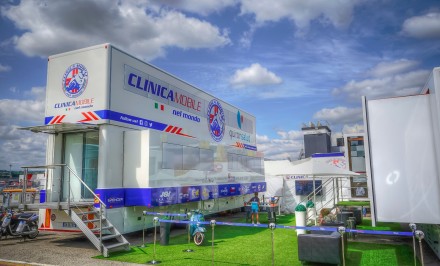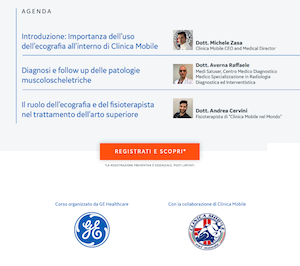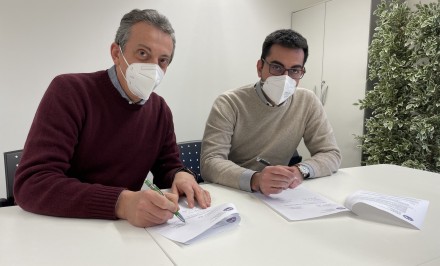The fastest drivers in the world and the doctors who treat them
The speed – and the crashes that come with it – can take a serious toll on these driver’s bodies
GE Healthcare – The Pulse: interview to Dr Zasa and our physiotherapist Christian Giometti about the use at Clinica Mobile of the two LOGIQ e portable ultrasound systems at the MotoGP and WorldSBK races.
They’re faster than a Formula One car, pack 250-horsepower engines and can go from zero to 200 miles per hour in less than 15 seconds.
Motorcycle racing is one of the fastest sports on earth, featuring the best riders on the planet riding the most technologically advanced bikes in the world. For spectators, drivers are a thrilling blur of heart-pounding speed and ear-splitting noise on the track. But for drivers, the speed – and the crashes that come with it – can take a serious toll on their bodies.
“Accidents are very frequent in the motorcycle context. As you can imagine, small fractures often occur when riding at 300 kmh [186 mph] on two wheels,” says Dr. Michele Zasa, Medical Director and owner at the Clinica Mobile in Parma, Italy.
Clinica Mobile follows riders through 16 countries across four continents with mobile healthcare units, the largest of which is a 150m2, two-story full outpatient clinic. Medical teams treat up to 150 patients and physiotherapists conduct 300-400 treatments for approximately 2,000 drivers and race staff every race weekend.
The clinicians at the Clinica Mobile need technology as fast and as portable as they are. For the 2019 season, Clinica Mobile – the official healthcare partner of the MotoGPTM and SuperBike World Championships and which has been providing medical care to the riders and their crews for more than 40 years – has equipped its mobile clinic with two LOGIQ e portable ultrasound systems to provide athletes with ultrasound diagnosis and personalized treatments capabilities for diagnostics and physiotherapy treatments.
“The use of the ultrasound system is essential because it supports diagnosis and treatment for the orthopedist and the physiotherapist. Having the machine always at hand shows the progress or lack of improvements to confirm the effectiveness of the chosen therapy,” Dr. Zasa says. “These ultrasound systems allow you to examine and show any lesions on site and immediately think of a recovery plan.”
Christian Giometti is a physiotherapist at Clinica Mobile who helps drivers recover their physical strength after injuries and accidents and helps them optimize performance in races.
“Precision during diagnosis and treatment is very important,” Giometti says. “LOGIQ e allows us to monitor the driver with greater ease and immediacy and gives us feedback on the spot. We now have the opportunity to do a treatment and see immediately how the tissue reacts.”
The system also makes it easy to compare images from different scans and monitor drivers at different stages of an examination or treatment to follow the recovery process, which could help tailor that treatment plan.
“For example, we followed a driver who was injured during a workout. He was complaining of pain in the thigh. Thanks to the ultrasound scanner, we were able to detect the presence of an extensive hematoma and see the reduction of the latter thanks to the physiotherapy treatments,” Dr. Zasa added.
Dr. Zasa and his team aren’t just physicians to the drivers and their crew – they’re more like family, with relationships that go beyond the racetrack. “Some of the drivers don’t even go to the family doctor, they wait for the race weekend to discuss any problems with us. In addition to this role as a family doctor, we provide comprehensive advice and possibly refer them to specialists after making a first assessment and a first attempt at therapy.”
The link to the article: http://newsroom.gehealthcare.com/the-fastest-drivers-in-the-world-and-the-doctors-who-treat-them/?utm_source=linkedin.com&utm_medium=GESocial&utm_content=&utm_campaign=clinica+mobile










